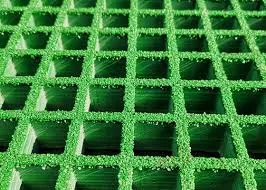
-
 Afrikaans
Afrikaans -
 Albanian
Albanian -
 Amharic
Amharic -
 Arabic
Arabic -
 Armenian
Armenian -
 Azerbaijani
Azerbaijani -
 Basque
Basque -
 Belarusian
Belarusian -
 Bengali
Bengali -
 Bosnian
Bosnian -
 Bulgarian
Bulgarian -
 Catalan
Catalan -
 Cebuano
Cebuano -
 China
China -
 China (Taiwan)
China (Taiwan) -
 Corsican
Corsican -
 Croatian
Croatian -
 Czech
Czech -
 Danish
Danish -
 Dutch
Dutch -
 English
English -
 Esperanto
Esperanto -
 Estonian
Estonian -
 Finnish
Finnish -
 French
French -
 Frisian
Frisian -
 Galician
Galician -
 Georgian
Georgian -
 German
German -
 Greek
Greek -
 Gujarati
Gujarati -
 Haitian Creole
Haitian Creole -
 hausa
hausa -
 hawaiian
hawaiian -
 Hebrew
Hebrew -
 Hindi
Hindi -
 Miao
Miao -
 Hungarian
Hungarian -
 Icelandic
Icelandic -
 igbo
igbo -
 Indonesian
Indonesian -
 irish
irish -
 Italian
Italian -
 Japanese
Japanese -
 Javanese
Javanese -
 Kannada
Kannada -
 kazakh
kazakh -
 Khmer
Khmer -
 Rwandese
Rwandese -
 Korean
Korean -
 Kurdish
Kurdish -
 Kyrgyz
Kyrgyz -
 Lao
Lao -
 Latin
Latin -
 Latvian
Latvian -
 Lithuanian
Lithuanian -
 Luxembourgish
Luxembourgish -
 Macedonian
Macedonian -
 Malgashi
Malgashi -
 Malay
Malay -
 Malayalam
Malayalam -
 Maltese
Maltese -
 Maori
Maori -
 Marathi
Marathi -
 Mongolian
Mongolian -
 Myanmar
Myanmar -
 Nepali
Nepali -
 Norwegian
Norwegian -
 Norwegian
Norwegian -
 Occitan
Occitan -
 Pashto
Pashto -
 Persian
Persian -
 Polish
Polish -
 Portuguese
Portuguese -
 Punjabi
Punjabi -
 Romanian
Romanian -
 Russian
Russian -
 Samoan
Samoan -
 Scottish Gaelic
Scottish Gaelic -
 Serbian
Serbian -
 Sesotho
Sesotho -
 Shona
Shona -
 Sindhi
Sindhi -
 Sinhala
Sinhala -
 Slovak
Slovak -
 Slovenian
Slovenian -
 Somali
Somali -
 Spanish
Spanish -
 Sundanese
Sundanese -
 Swahili
Swahili -
 Swedish
Swedish -
 Tagalog
Tagalog -
 Tajik
Tajik -
 Tamil
Tamil -
 Tatar
Tatar -
 Telugu
Telugu -
 Thai
Thai -
 Turkish
Turkish -
 Turkmen
Turkmen -
 Ukrainian
Ukrainian -
 Urdu
Urdu -
 Uighur
Uighur -
 Uzbek
Uzbek -
 Vietnamese
Vietnamese -
 Welsh
Welsh -
 Bantu
Bantu -
 Yiddish
Yiddish -
 Yoruba
Yoruba -
 Zulu
Zulu
grp grating
Understanding GRP Grating An Overview
GRP grating, or Glass Reinforced Plastic grating, is a highly versatile and durable material used across various industries. It combines the strength of glass fibers with the resilience of plastic, resulting in a lightweight yet sturdy product. This combination makes GRP grating an excellent alternative to traditional materials such as metal or wood, especially in environments that demand high performance and low maintenance.
One of the standout features of GRP grating is its exceptional resistance to corrosion. Unlike metal grates, which can rust and degrade over time, GRP grating does not suffer from oxidation. This makes it particularly suitable for applications in harsh environments, whether they involve exposure to chemicals, moisture, or extreme temperatures. Industries such as petrochemical, marine, food processing, and wastewater management have increasingly turned to GRP for their grating needs.
Understanding GRP Grating An Overview
Moreover, GRP grating is designed to be slip-resistant, which is a crucial feature in maintaining safety in industrial and commercial environments. It is available in various surface textures to enhance grip in wet or oily conditions, significantly reducing the risk of slips and falls. This safety aspect is vital in factories, shipyards, and other workplaces where workers are often on their feet, handling equipment or materials.
grp grating

The versatility of GRP grating extends to its design and customization options. It can be manufactured in various colors, sizes, and configurations to suit specific project requirements. This flexibility allows architects and engineers to create aesthetically pleasing as well as functional designs. The option to incorporate different lighttransmitting properties into GRP grating also enables the creation of visually interesting spaces.
In terms of environmental sustainability, GRP grating is a favorable choice, as it can be recyclable and often involves less energy in its production process compared to metals. As industries worldwide work towards reducing their environmental footprints, the use of eco-friendly materials like GRP aligns with broader sustainability goals.
Maintenance of GRP grating is minimal due to its non-porous surface that resists staining and contaminants. Regular cleaning with mild detergents is usually sufficient, making it a cost-effective solution in the long term. The longevity of GRP grating, often exceeding several decades, further emphasizes its economical value.
In conclusion, GRP grating is a revolutionary material that addresses various challenges faced by industries today. Its blend of strength, resistance to corrosion, lightweight nature, slip resistance, and aesthetic flexibility positions it as an ideal option for a wide range of applications. As the demand for innovative materials continues to grow, GRP grating is set to play a crucial role in shaping the future of industrial design and construction.
Latest news
-
Exploring the Benefits of Top Hammer Drifter Rods for Enhanced Drilling PerformanceNewsJun.10,2025
-
High-Precision Fiberglass Winding Machine for GRP/FRP Pipe Production – Reliable & Efficient SolutionsNewsJun.10,2025
-
FRP Pipes & Fittings for Shipbuilding - Corrosion-Resistant & LightweightNewsJun.09,2025
-
Premium FRP Flooring Solutions Durable & Slip-ResistantNewsJun.09,2025
-
Premium Fiberglass Rectangular Tanks Durable & Lightweight SolutionNewsJun.09,2025
-
Tapered Drill String Design Guide Durable Performance & UsesNewsJun.09,2025









